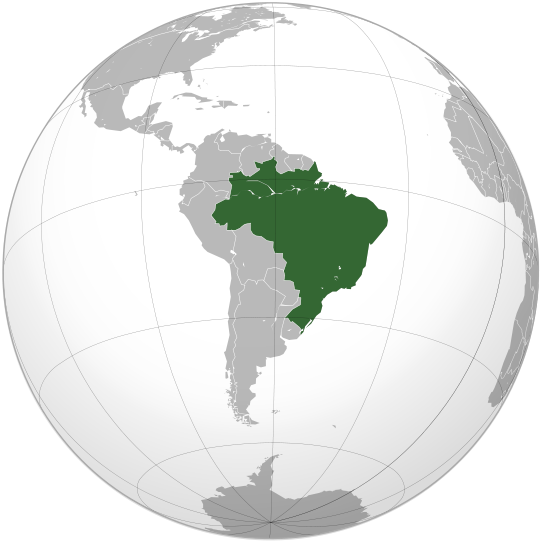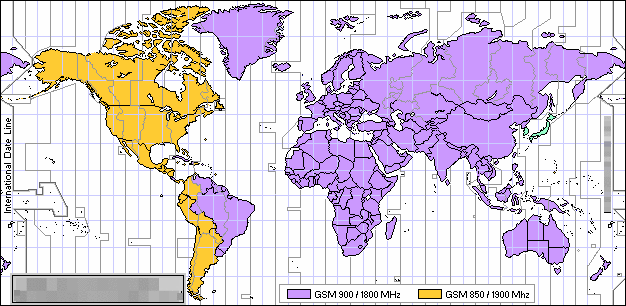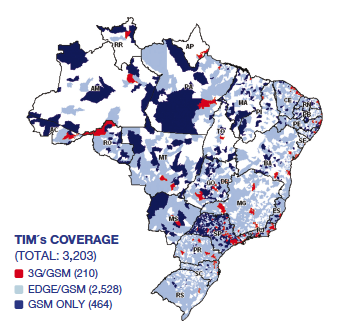Cell phone jammers and signal blockers in Brazil

Mobile communications in Brazil are pretty well developed. But it can be said not about the whole country because northwestern regions lack mobile communications and even basic stationary landline phones. That's a pretty common problem for countries in Latin America. For example, Mexico has the same issues with contacts in mountain regions.
Major mobile operators
Major mobile carriers here are TIM, Claro, Vivo, and Oi. We should also mention that TIM and Vivo are the only nationwide mobile carriers, while Claro operates in all states except Amazon basin states. Oi is not nationwide too, and its services are limited.
But the most significant carrier in the Brazilian market is TIM. Its telephony network is nationwide and is based on GSM technology. That company has a range of almost 94% of the Brazilian urban population and is available in 3203 cities. All the carriers in Brazil provide mobile internet access based on GPRS and EDGE technologies. EDGE technology is available in 79% of GSM-covered areas of the country.

All of those carriers provide GSM services, and the GSM standard in Brazil is similar to US and Canada. It uses 900/1800 MHz frequencies to transmit voice calls and text messages, so if you are planning to visit this country and have a GSM 900/1800 mobile phone, it will be convenient to purchase a local SIM card. As you can see, Brazil uses the so-called European GSM standard, and if you are traveling to the US – your mobile device won't work in their networks.
3G service is also presented in this country, and it works with a most widely spread 2100 MHz frequency, but TIM provides both 2100 MHz and WCDMA, which uses 850 MHz for 3G. Mobile Internet is primarily available in big cities. The coverage in rural areas is pretty weak and sometimes even unavailable. But the 3G market is growing pretty fast in Brazil. It is obvious because the share of 3G-enabled smartphones sold in Brazil grew, and in 2012, 12 million 3G-enabled devices were sold here.

Another reason for such fast market growth is that mobile communications are relatively cheap in Brazil, but on the other hand, roaming is costly, so if you are a tourist – make sure to buy a local SIM card, they are sold free here. Also, we should admit that 3G Internet access is available to 54% of the urban population of Brazil.
And now, a couple of words about 4G. Brazil is building its 4G network, which will be launched soon. Now major mobile carriers are getting licenses for broadcasting at 4G frequencies. 4G coverage will probably be available on the same territory where 3G is presented.
Jammers in Brazil
A mobile jammer is a device that suppresses mobile communication.
- Often the devices are used by special services to suppress the cell phones of terrorists.
- Also, cellular jammers are used to protect against eavesdropping on confidential conversations.
- They use electromagnetic waves of a specific frequency that block the operation of a mobile phone or another device.
In any business where there are customers, there are competitors. And in today's world, when technologies are developing rapidly, it is essential to keep up with competitors. When we want to attract new customers, we need good advertising. But if we are within reach of a competitor, they can easily intercept our advertising and make it more effective. To prevent this from happening, there are special devices called cell jammers.
As we have already mentioned, Brazil has relatively poor coverage in sparsely populated areas, but all those four significant carriers provide mobile services for almost 98% of the Brazilian population. In short conclusion, we can say that mobile communications grow pretty quickly in Brazil, and most of the problems with mobile coverage are caused by the lack of investment and low populations in some areas.






